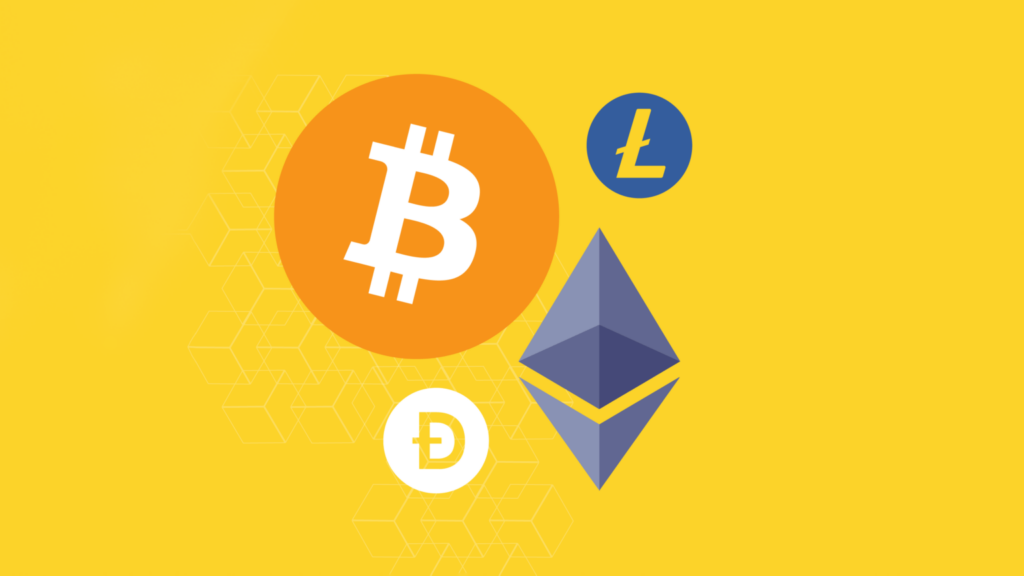
What Is Crypto Lending?
Crypto lending is the act of depositing cryptocurrency to be lent to borrowers in exchange for recurrent interest payment. Payments are made in the form of cryptocurrency, which is commonly deposited and compounded every day, every week, or every month.
Decentralized and centralized crypto lenders are the two primary categories of crypto lending platforms. Both provide access to high interest rates, often as high as 20% annual percentage yield (APY), and both typically need depositing collateral in order to get a crypto loan.
Understanding Crypto Lending
The opportunity to lend out cryptocurrency and earn interest in the form of cryptocurrency incentives is made available through cryptocurrency lending platforms for investors. In 2020, lending platforms gained popularity, and since then, the total value of loans locked on different platforms has increased to billions.
There are two parts to cryptocurrency lending: interest-bearing deposits and loans. Similar to a bank account, deposit accounts have similar functions. The lending platform accepts cryptocurrency deposits from users and pays interest of up to 8% APY (depending on the platform and the cryptocurrency). Deposited money might be used by the platform to make loans to borrowers or for other kinds of investments.
In order to borrow money or cryptocurrency, borrowers normally have to deposit at least 100% (and sometimes up to 150%, depending on the lender) in cryptocurrency as collateral.
The interest rates differ by platform and require for monthly payments, much like with traditional loans. In contrast to conventional loans, cryptocurrency loans have durations as short as seven days and as long as 180 days, with an hourly interest rate, like Binance. Some lenders, like Nexo, which offers 0% APR, provide an endless line of credit in their place.

Types of Crypto Loans
There are several types of cryptocurrency loans available:
Crypto line of credit
Some services provide a cryptocurrency line of credit rather than a standard loan with a defined term length. Users can borrow up to a specific amount of the deposited collateral using this kind of collateralized loan, but there are no specified terms for repayment, and they just pay interest on the money they withdraw.
Collateralized loans
Collateralized loans are the most popular and require deposited cryptocurrency that is used as collateral for the loan. The majority of platforms demand overcollateralization, which limits how much of the deposited collateral borrowers can access (usually below a 90% loan-to-value). The interest rate and the likelihood of having your margin called are both lower the lower the loan-to-value (LTV) ratio.
Flash loans
Flash loans are typically available on crypto exchanges and are instant loans that are borrowed and repaid in the same transaction. These are very high-risk loans that are typically used to take advantage of market arbitrage opportunities, such as buying cryptocurrency for a lower price in one market and instantly selling for a higher price in another, all within the same transaction
Uncollateralized loans
Uncollateralized loans are not as popular, but they function similarly to personal loans. Borrowers must fill out a loan application, pass identity verification, and complete a creditworthiness review to be approved. These loans have a higher risk of loss for lenders because there is no collateral to liquidate in the event of a loan default.

Risks of Crypto Lending
Due to the loans’ and deposited funds’ dependence on the constantly erratic cryptocurrency market, lending in the cryptocurrency space is inherently dangerous for both borrowers and lenders. Crypto aficionados are less than thrilled as a result of the recent Celsius fiasco, which resulted in the overnight freezing of billions of dollars in deposits.
Here are a few of the risks of crypto lending:
High interest rates
Though some crypto loans offer low rates, most crypto loans charge over 5% APR, with some charging up to 13% APR (or more).
Illiquidity
Crypto assets often become unaccessible and illiquid when they are deposited onto crypto loan services. While some cryptocurrency lending services permit lenders to access deposited funds reasonably quickly, others may necessitate a protracted waiting period.

Margin calls
A decrease in the value of the deposited collateral might result in a margin call when customers pledge collateral and borrow against it. When the LTV of a cryptocurrency loan falls below the agreed-upon rate, this occurs. When this occurs, borrowers have two options: they can either add more collateral to bring the LTV back down or they can risk liquidation.
Unregulated
Platforms for crypto lending are unregulated and do not provide the same level of protection that banks do. For instance, user money up to that amount are safeguarded in the event that a bank goes bankrupt since U.S. bank deposits are insured by the Federal Deposit Insurance Corporation (FDIC) for up to $250,000 per depositor. There are no user protections for cryptocurrency lending platforms that have solvency problems, and money may be lost.
How to Get a Crypto Loan
Users must register for a centralized lending platform (like BlockFi) or link a digital wallet to a decentralized lending platform in order to submit an application for a cryptocurrency loan (such as Aave). Users will next choose the type of loan and the desired loan amount before choosing the collateral to deposit. The amount that is available will change depending on the collateral and deposit.
The borrowed cash will quickly move to the user’s account or digital wallet after the user deposits the collateral into the platform’s digital wallet.
The majority of loans give quick approval, and smart contracts are used to lock in loan conditions.

How to Lend Crypto
Users must register for a lending platform, choose a supported cryptocurrency to deposit, then pay money to the platform in order to become a crypto lender. Interest can be paid in kind or with the native platform token on a centralized crypto lending platform. Interest is paid out in kind on a decentralized exchange, but there may also be bonus payments.
Is Crypto Lending Safe?
Lending cryptocurrency is a double-edged sword. On the one hand, the majority of loans are secured by collateral, so even in the case of a default, lenders can recover their losses through liquidation. In comparison to conventional bank accounts, they also offer deposits at substantially greater interest rates. On the other hand, there are no legal safeguards for investors, giving lending companies the authority to arbitrarily lock consumers’ funds in place, as Celsius has done. Borrowers run the danger of collateral losing value and having to be liquidated, which would result in a substantially smaller return on their investment. Regulators from all around the world are focusing on lending platforms; rules are emerging around deposit accounts, and the Securities and Exchange Commission (SEC) even fined BlockFi $100 million for breaking securities laws. Ultimately, crypto lending can be secure for careful users, but both borrowers and investors face significant dangers.
What Is Decentralized Finance (DeFi) Lending?
A platform that provides lending and borrowing services that are controlled by smart contracts is known as decentralized finance (DeFi) lending. Decentralized apps (dApps) enable customers to link a digital wallet, deposit collateral, and instantly access funds. DeFi loans are instantaneous. DeFi lending enables customers to deposit cryptocurrency using a digital wallet and begin earning interest right away, with the interest often compounding every minute. The majority of DeFi lending platforms mandate overcollateralization, requiring deposits of at least 110% of the loan amount. The deposit of collateral receives income even when it is tied to a loan, which is how DeFi differs from centralized systems.
How Do You Make Money With Crypto Lending?
Users can earn a large amount of interest on their crypto deposits when they make them on a lending platform, often more than they can at regular banks. The money that is deposited is loaned to borrowers who cover a portion of the interest, and it can also be invested in other ways to increase yield.







